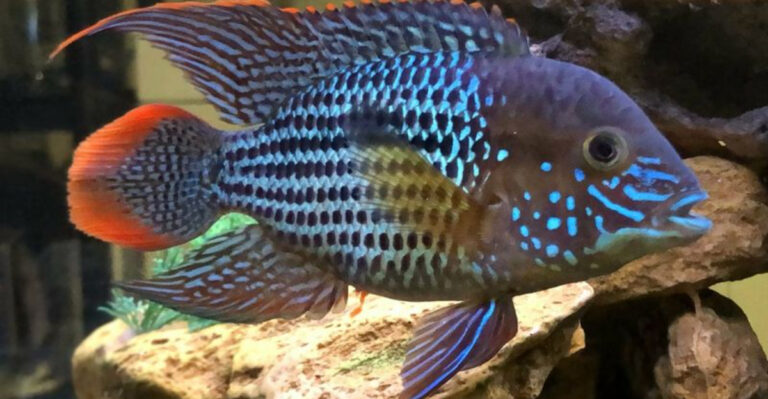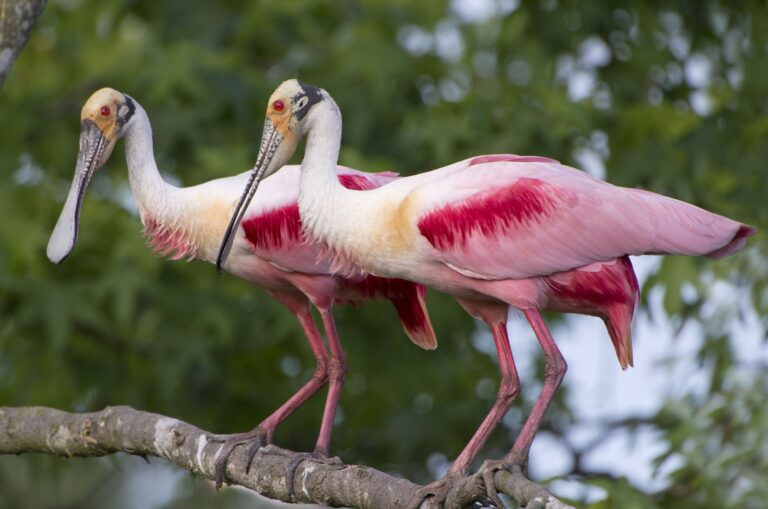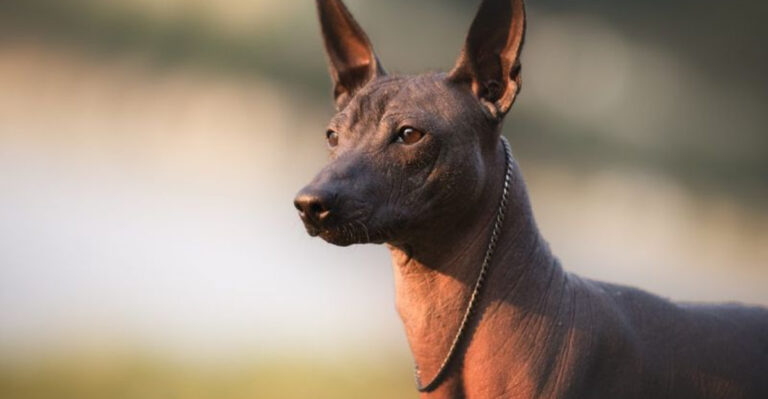Namaqua Chameleon Is A Master Of Camouflage With Unique Survival Skills
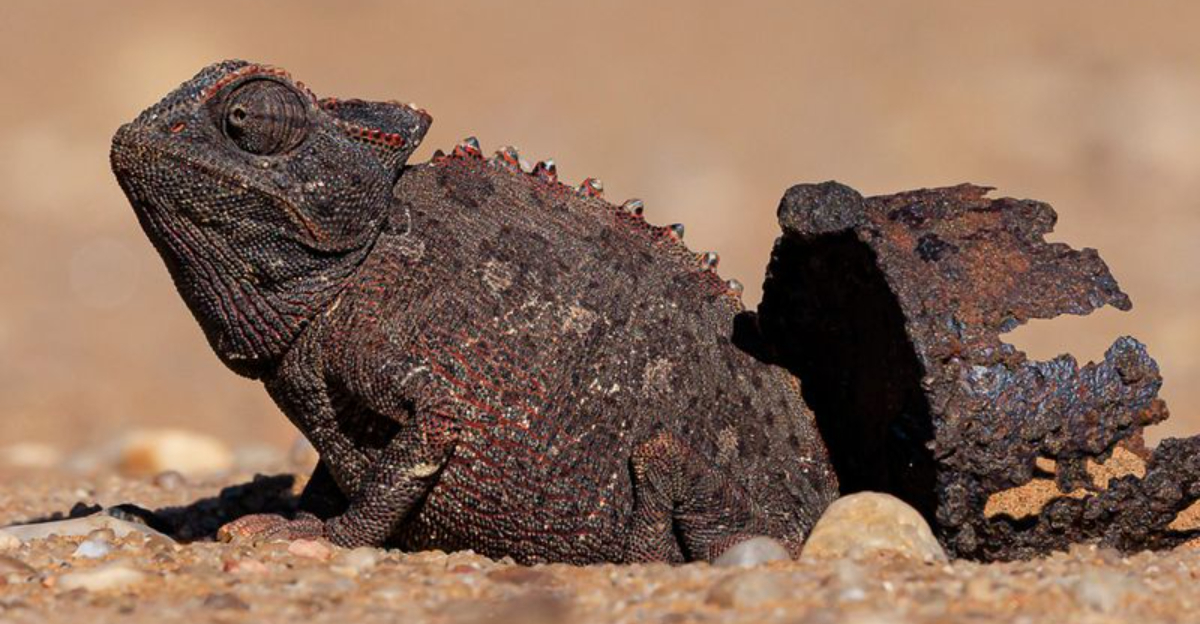
The Namaqua chameleon stands out as one of nature’s most remarkable desert survivors. Native to southern Africa’s harshest environments, this ground-dwelling reptile has evolved extraordinary adaptations to thrive where most creatures perish.
From color-changing abilities to unique water-gathering techniques, these resilient lizards showcase nature’s ingenious solutions to extreme desert living.
Habitat And Distribution
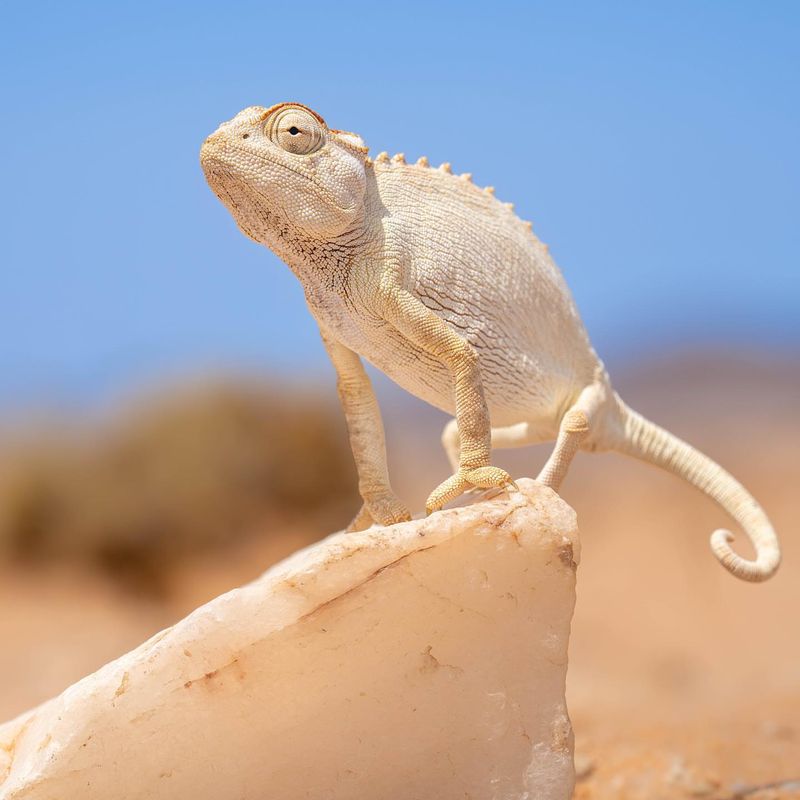
Roaming the scorching Namib Desert, these hardy reptiles have carved out a niche in one of Earth’s most unforgiving landscapes. They’ve adapted perfectly to southern Africa’s arid regions spanning Namibia, western South Africa, and southern Angola.
Unlike their tree-dwelling cousins, they’ve mastered life among the dunes and rocky plains.
Ground-Dwelling Lifestyle
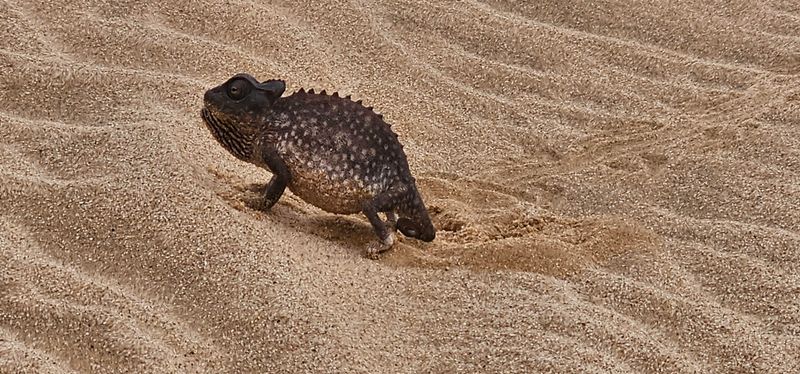
Breaking the chameleon stereotype, Namaqua chameleons prefer sand to branches. While most chameleon species spend their lives in trees, these desert specialists have evolved for terrestrial living.
Their sturdy legs allow them to navigate sandy terrain efficiently, and they seek shelter in burrows rather than foliage when temperatures soar.
Exceptional Camouflage
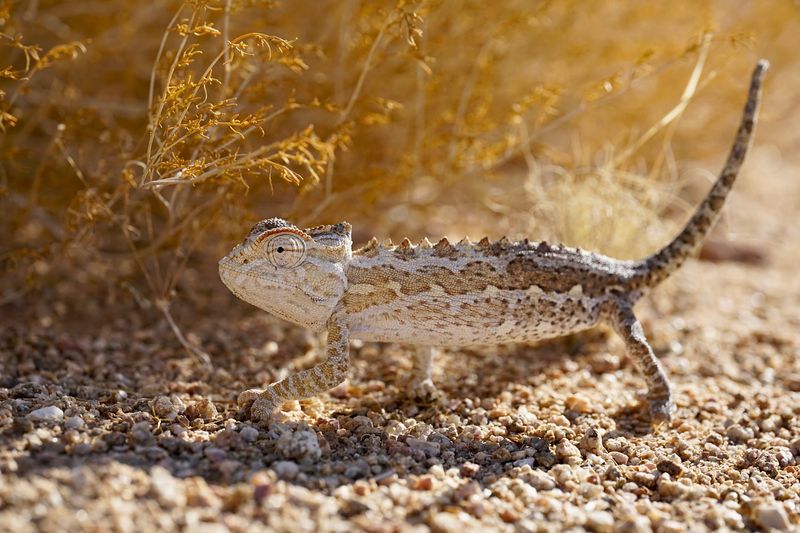
Masters of disguise, these chameleons transform their skin color within minutes to match surrounding terrain. Their color-shifting ability isn’t just for hiding—it’s a sophisticated hunting strategy too.
By blending perfectly with rocks and sand, they become invisible to both predators hunting them and prey they’re stalking, giving them a crucial survival edge.
Unique Thermoregulation
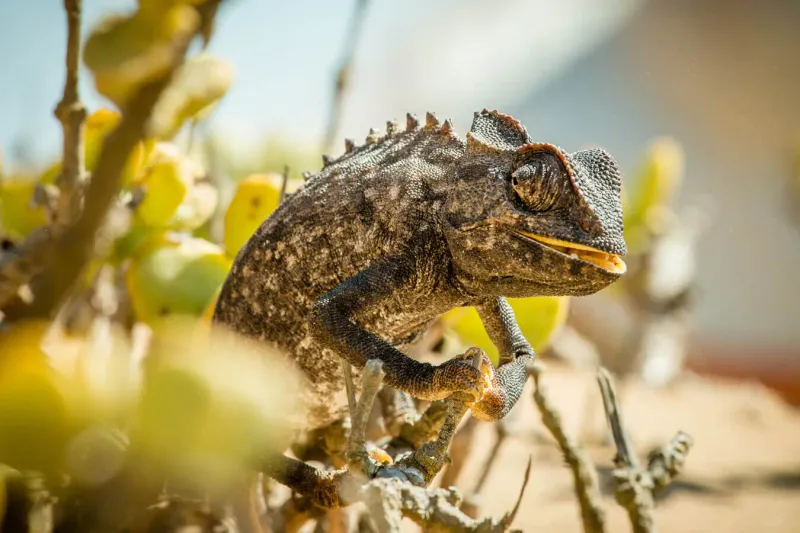
Morning finds these clever reptiles sporting dark colors to absorb precious warmth from the rising sun. As midday heat intensifies, they shift to lighter shades, reflecting scorching rays that could otherwise prove fatal.
This remarkable temperature control system lets them survive desert extremes where temperatures fluctuate dramatically between blazing days and frigid nights.
Dietary Habits
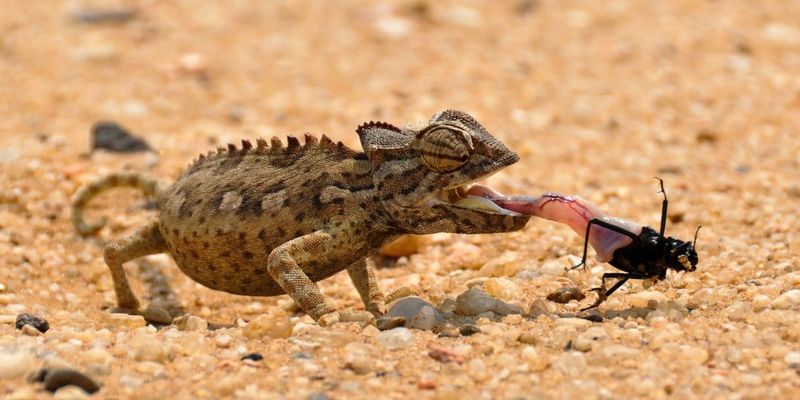
Armed with a lightning-fast tongue, these desert hunters snatch beetles, grasshoppers, and other insects with remarkable precision. Their diet occasionally includes surprising prey—small lizards and even snakes fall victim to larger specimens.
Their opportunistic feeding habits ensure survival in a habitat where food sources are unpredictable and often scarce.
Water Acquisition
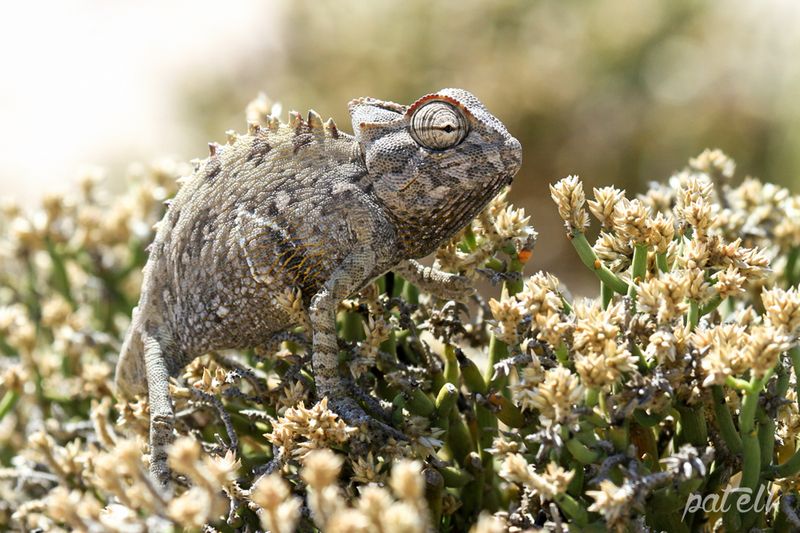
Survival in the desert demands creative solutions for finding water. These resourceful reptiles harvest morning dew from surfaces like rocks and plants before it evaporates in the harsh sun.
Even more fascinating, their specialized skin can absorb fog moisture directly—a vital adaptation in the Namib, where coastal fog provides critical hydration for desert dwellers.
Reproductive Behavior

Female Namaquas dig carefully constructed nests in cool, moist sand to protect their precious eggs. After approximately 100 days beneath the surface, hatchlings emerge fully independent, ready to face desert challenges.
Remarkably adaptable, females may produce multiple clutches annually when conditions are favorable, ensuring population survival despite harsh environmental pressures.
Territorial Nature
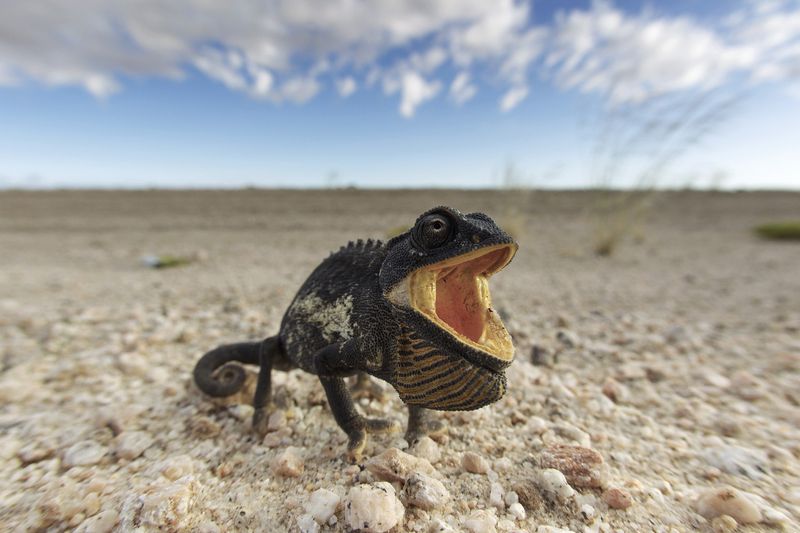
Despite their modest size, these chameleons fiercely defend their personal space. Males establish larger territories than females, using dramatic displays to warn off rivals.
When threats persist, confrontations escalate to physical battles featuring open-mouthed displays, color changes, and body inflation. These territorial boundaries ensure access to limited resources in their harsh habitat.
Defensive Behavior
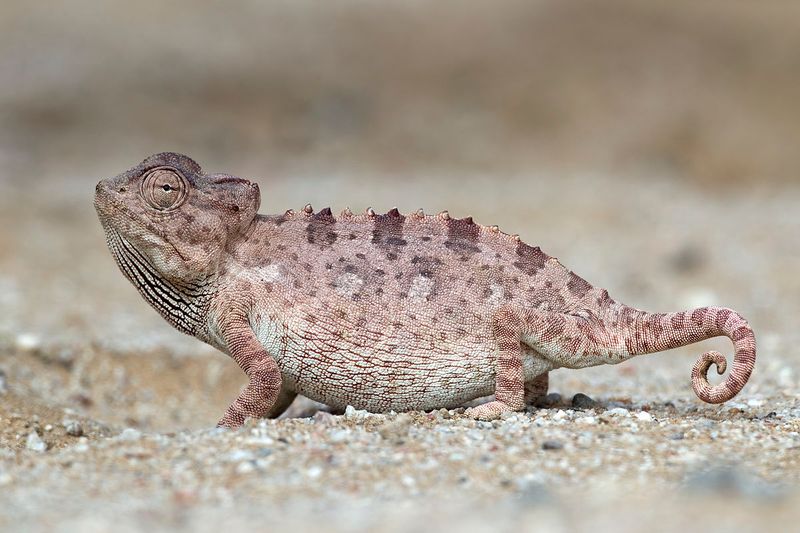
When threatened, these normally calm reptiles transform into intimidating defenders. Their skin darkens dramatically while their bodies inflate to appear larger and more formidable.
Add in a wide-open mouth display and hissing sounds, and potential predators often think twice before attacking. This bluffing strategy helps compensate for their lack of venom or speed.
Unique Locomotion
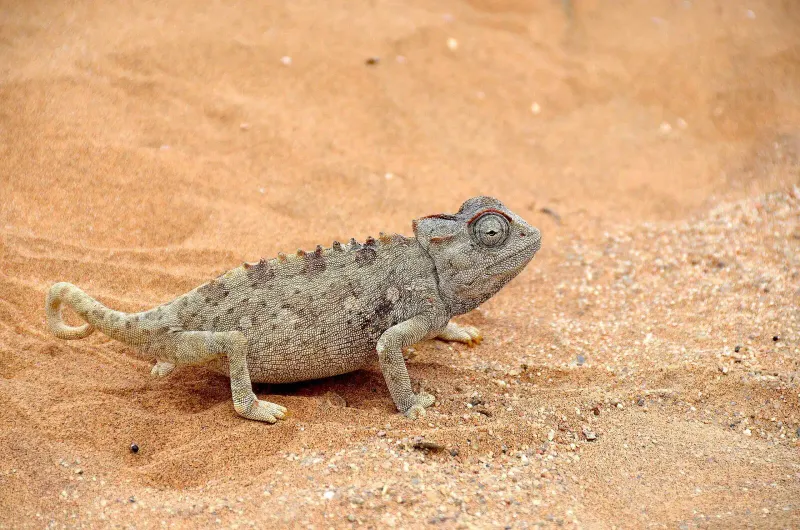
Unlike their slow-moving tree-dwelling relatives, Namaqua chameleons can sprint across desert sands with surprising speed. Their specialized feet and legs have adapted for rapid movement across shifting dunes.
This unusual mobility gives them a critical advantage in both hunting and escaping danger—a rare trait that sets them apart from virtually all other chameleon species.
Conservation Status
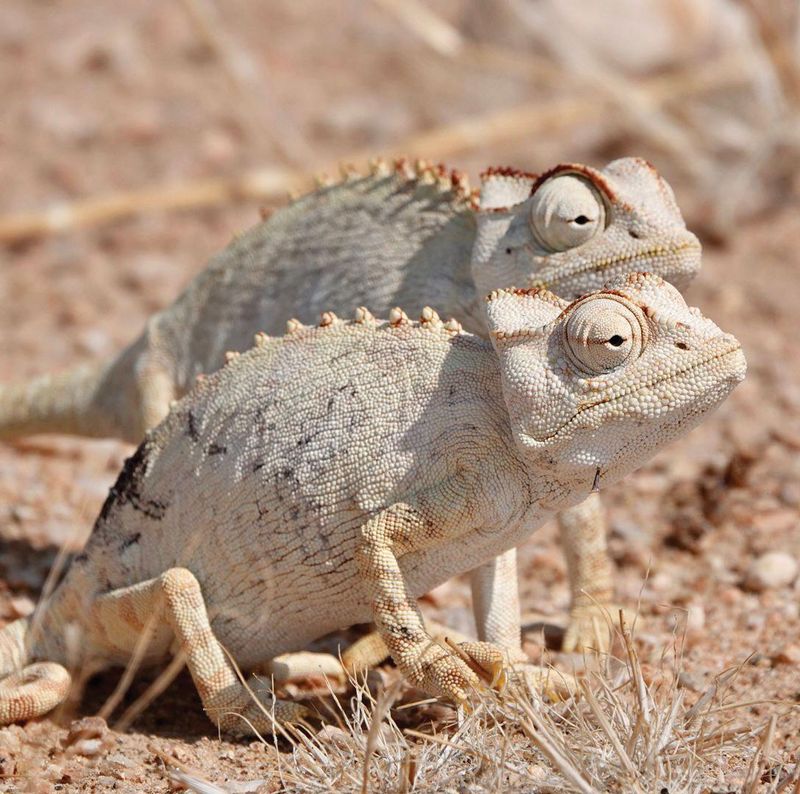
Currently listed as “Least Concern” by conservation authorities, these resilient reptiles maintain stable populations across their range. However, growing threats loom on the horizon.
Habitat destruction from mining and development encroaches on their territory, while illegal collection for exotic pet markets removes individuals from wild populations. Preservation efforts focus on habitat protection and trade regulation.


